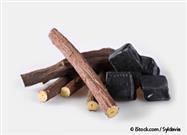What Is Licorice Root Good For?

Thescientific name for licorice root, Glycyrrhiza,comes from “glukos”(sweet) and “riza” (root). This “sweet root” contains glycyrrhizin, a compoundthat can be up to 50 times sweeter than sugar. So it’s not surprising that whenmany people think of licorice, they think of the confectionery by the same thename.
However,licorice is a perennial herb native to the Mediterranean that’s been prized forits medicinal properties for centuries. In fact, its use is documented inAssyrian clay tablets and Egyptian papyri.
Itwas valued in ancient Arabia for treating coughs, while in ancient Greece it wasalso used for coughs along with asthma. The herb also has a history of use inChina, where it was used to relieve irritation of the mucous membranes andspasms in the gastrointestinal tract.
Virtuallyall Chinese herbal formulas contain licorice because it assists ingastrointestinal absorption and “harmonizes” the herbal blends.1 In other words, it helpsto enhance the effects of the other herbs.
InIndia, traditional Ayurvedic medicine regards licorice root as an expectorant, spasm-relieving, and anti-inflammatory,demulcent (relieves irritation of the mucous membranes) that also affects thefunction of the adrenal glands.2
The Many Versatile Uses ofLicorice Root
Licoriceis said to be one of the most extensively researched medicinalplants, and it has a lengthy list of versatile uses to match. Here are someof its claims to fame:
1. Relieve Stomach Ulcers
Licorice has antibacterial properties and has been found to helprelieve stomach ulcers (many of which are caused by Helicobacter pylori (H. pylori) bacteria). Germany’sCommission E approved the use of licorice root for treating ulcers.
2. Sore Throat, Cough andCold Remedy
One of licorice root’s most well-known uses is to ease congestionfrom coughsand colds. It acts as an expectorant, helping to loosen and expel phlegm,and it also has a soothing effect on irritated mucous membranes.
The German Standard License approveslicorice root infusions for loosening mucus and alleviating discharge inbronchitis, while the British HerbalCompendium indicates the use of licorice root for bronchitis.3
3. Acid Reflux and DigestiveSupport
Licorice root is beneficial for digestion and helps sootheirritation and inflammation of your digestive tract.
It is approved for treating painful spasms associated with chronicgastritis by the German Standard License, and in France licorice root may beused to treat bloating, impaired digestion and gas.4
An extract of licorice was also found to alleviate symptoms offunctional dyspepsia (upset stomach),5 and a combination of extracts from licorice, chamomile, silverweed, angelica,blessed thistle and wormwood is effective in relieving indigestion and mildgastrointestinal complaints, including vomiting.6
4. Anti-Inflammatory and ImmuneSystem Support
More than 400 compounds have beenisolated from licorice, including isoliquiritigenin and naringenin. Theseconstituents promote regulatory T cell induction, which plays a critical rolein controlling immune responses and preventing autoimmunity.7
According to research published inScientific Reports, licorice exhibits a number of beneficial properties forimmune system support:
“It [licorice] is known as a well-recognized medicineagainst peptic ulcer disease, constipation, cough and viral infection.Glycyrrhizin and flavonoids such as liquiritin, isoliquiritin, and theiraglycones have been reported as the major constituents of licorice …
Glycyrrhizin inhibits tissue inflammation by reducingreactive oxygen species (ROS) generation … licorice has a significantanti-inflammatory properties in vitro and in vivo through multiple mechanisms.
… In recent years, licorice flavonoid are more and morepopular because of their significant bio-activity in antimicrobial,antioxidative, and anti-inflammatory function.”
5. Relieve Constipation
Licorice has a natural laxative effect that promotes peristalsis(the contractions in your colon that help move waste through).
In one study, a traditional Iranian herbal preparationcontaining licorice and other herbs was found to significantly improve chronicconstipation compared to a placebo.8
6. Fight Viral Infections
Licorice has broad-spectrum anti-viral activity and may beeffective against herpes, HIV, hepatitis, SARS and influenza.
According to one study published in the Chinese Journal ofVirology, “The triterpenoids of licoricehave the potential to become a novel broad-spectrum antiviral medicine and willbe widely used in the clinical treatment.”9
7.Adrenal Support
Licorice is an adaptogenic herb,which means it helps your body deal with stress. It turns out licorice helpsyour body to regulate the stress hormone cortisol,10 which takes a load off your adrenal glands.
8.PMS and Menopausal Support
Licorice has estrogen-like effects and has been found to reducethe number and duration of hot flashes as well as hormone therapy inpostmenopausal women.11 It may also be useful in relieving the symptoms of premenstrual syndrome (PMS).
Too Much Licorice Can BeDangerous
Whilelicorice root has many beneficial properties, be careful not to overdo it (bothby taking too high of a dose or by taking it for too long). Theactive ingredient, glycyrrhiza, if taken in excess, can lead topseudoaldosteronism, which makes you overly sensitive to a hormone in youradrenal cortex.
This, in turn, may cause headaches,fatigue, high blood pressure, and even heart attacks.12
The University of Maryland Medical Center recommends using licorice for nolonger than a week before seeking the advice of a health care provider, and notusing any licorice preparation for longer than four to six weeks.
This herb should not be taken by women who are pregnant orbreastfeeding. If you want the benefits of licorice without the risks ofoverdosing on glycyrrhiza, deglycyrrhizinated licorice (DGL), which is licoricewithout glycyrrhizin, is available.
However, you can also chew on a piece of licorice root ordrink licorice root tea. The University of Maryland Medical Center recommendsthe following forms anddosages:13
| Driedroot: 1 to 5 g as an infusion or decoction (boiled), three times daily | Licorice 1:5 tincture: 2 to 5 mL, three times daily |
| Standardized extract: 250 to 500 mg, three times daily,standardized to contain 20 percent glycyrrhizinic acid | DGLextract: 0.4 to 1.6 g, three times daily, for peptic ulcer |
| DGL extract 4:1: chew 300 to 400 mg, three times daily 20minutes before meals, for peptic ulcer | Mouthwash: Mix 1/2 teaspoon licorice extract with 1/4 cupwater, swish, gargle, and expel the mouthwash four times daily for cankersores |
Get My Best Health Tips for FREE
If you haven’t already, here’s your chance to subscribe to the world’s most popular newsletter! My FREE newsletter is instrumental in changing the lives of many people across the world. If you want to take control of your health then you won’t want to miss out on this opportunity.
When you subscribe I guarantee:
- You’ll be the first to hear about fast-breaking health news and hard-to-find tips for improving your emotional, physical, and spiritual well-being
- You’ll save money because I’m committed to helping you stay healthy, so you won’t need expensive prescription drugs or doctor’s visits so often
- You’ll get straight talk from me in plain English that shatters all the myths and misconceptions about health, aging, and fitness
- You’ll gain unlimited access to free eBooks that can have a profound impact on your health








